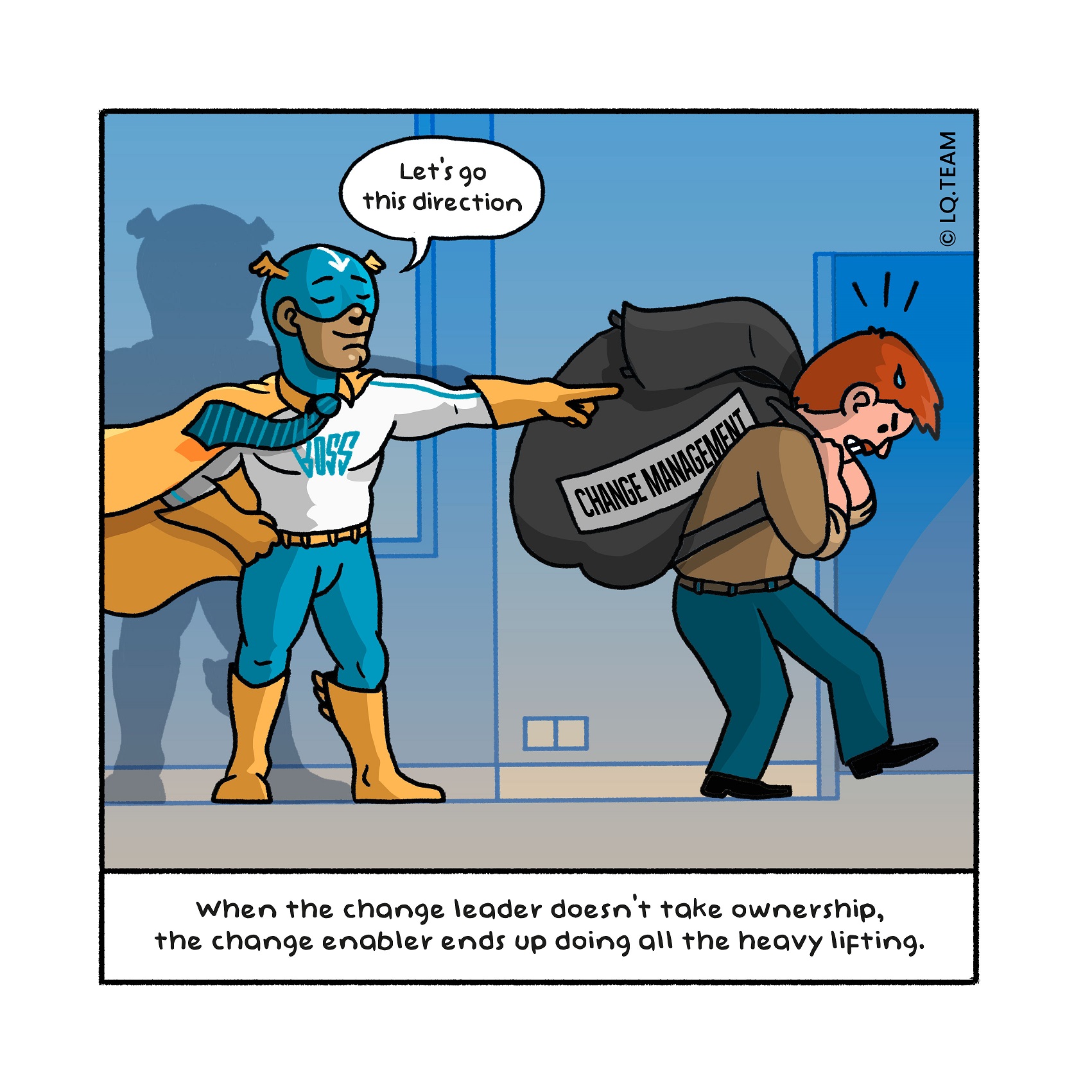
Nut to crack: How do you ensure leaders take ownership of their responsibilities and you don’t end up sitting in their seats?
This book presents examples of situations where enablers of an organisa- tional change, either unintentionally or unwillingly, end up in the seats of the change leader. This has a direct negative impact on the success rate of the organisational change; in fact, it is the last thing you want as a change en- abler. It feels lonely when you believe you must push harder than the change leaders or you experience a sense of having to fend for yourself. How do you break through this unhealthy pattern and ensure that the change leaders you work with take ownership of their role so that you can focus on your role?
Nutcracker: Have that honest conversation
For the solution to this challenge, I think back to what my former manager, Geraldine Fraser, shared with me years ago. Geraldine had been responsi- ble for the global change practice of Diageo for ten years. At the start of our working relationship, I asked her for her greatest lesson. Her answer: “If I feel that I expend significantly more mental and physical effort as a change en- abler than my counterpart, the change leader, then it’s a red flag. I’ve learned to initiate a discussion immediately instead of tiptoeing around it or ignoring this signal altogether. This has significantly benefited the change success of the processes that I have enabled and, equally importantly, has kept my relationship with the change leader on an equal level.”
Building on my conversation with Geraldine, the most common root causes of a lack of change leadership are, firstly, underestimating the need to invest energy and time into this role and, secondly, the multitude of topics on a leader’s plate. The first cause calls for a conversation in which everyone, on the basis of equality, recommits to their roles based on a shared understand- ing of how vital and business-relevant change leadership is to the success of this change and what the role truly asks for. The accountabilities shared in Challenge 19 as well as the leadership checklist can be leveraged during the conversation. The second cause asks for a frank conversation about the available capacity of the leader. The solution provided in Challenge 16 may help during this conversation.
Tip for change leader
Make all change leaders in your organisation aware of their change leadership role. Don’t underestimate the necessity of this conversation.
Tip for change enabler
The four levels of communication can help you structure and conduct these types of change leadership conversations properly should you encounter resistance to this con versation. For more information about this, I refer you to Challenge 38.
Kernel: Honesty is the best policy
By explicitly expressing your expectations about the importance and respon- sibilities of a change leader and change enabler and bringing it up, you keep the cooperation advantageous, benefitting yourself and the organisation.
